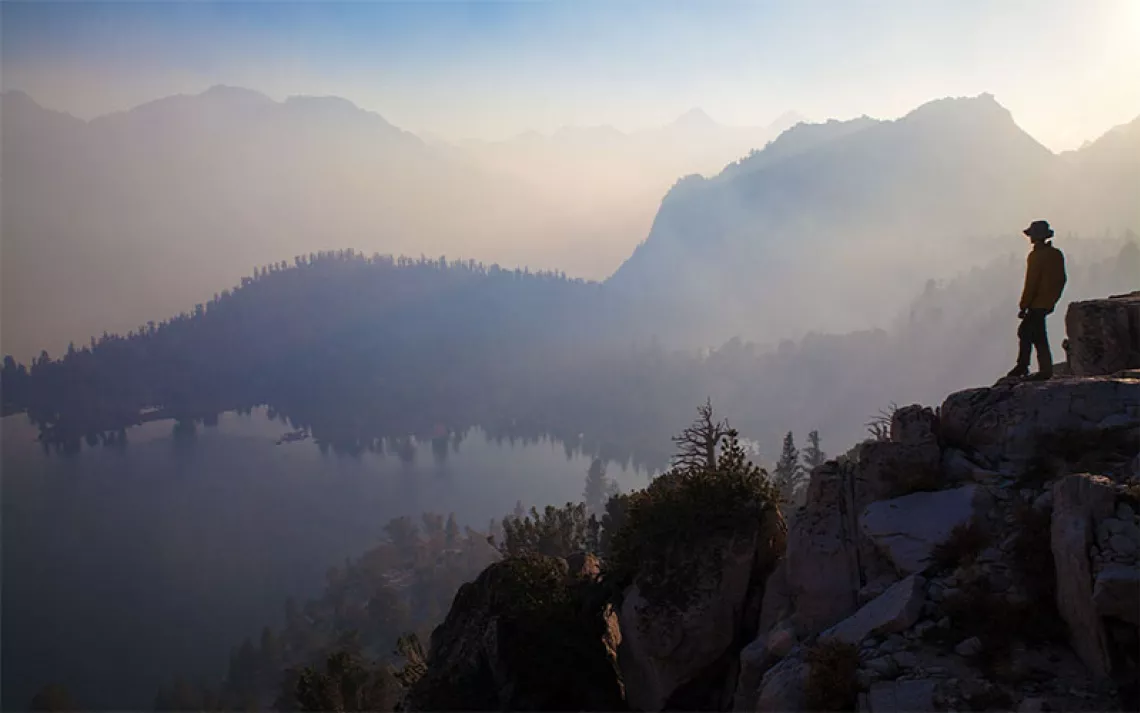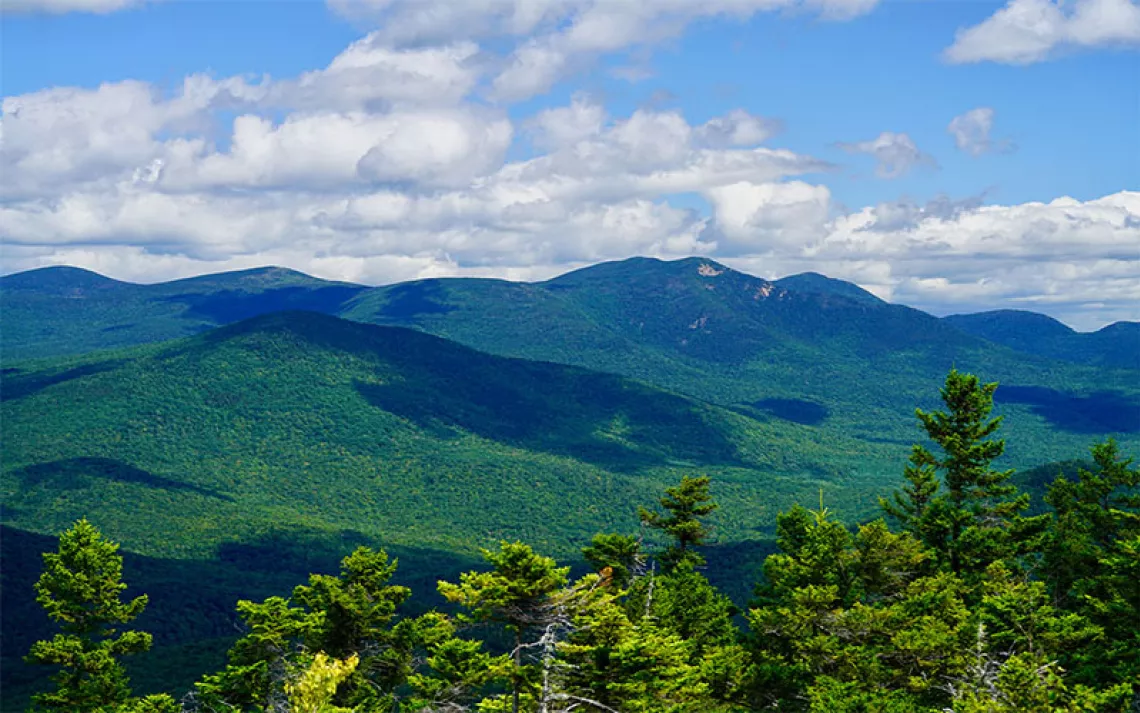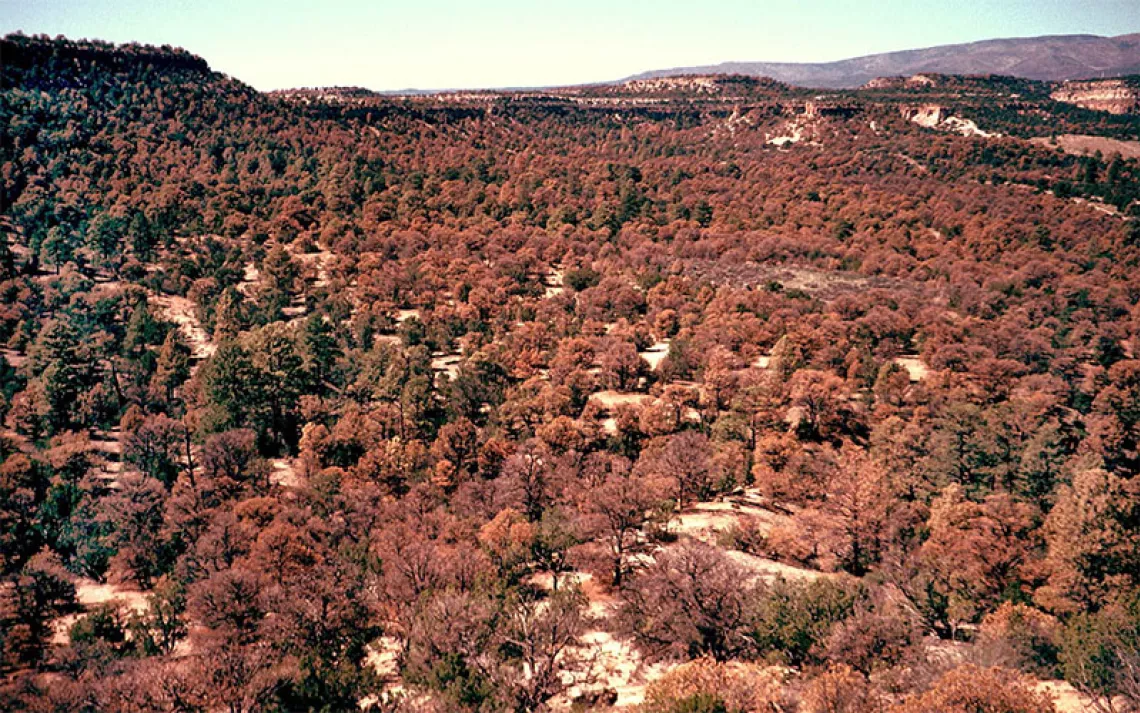President Biden Restores Logging Prohibitions in Tongass National Forest
Roadless Rule reinstated throughout two-thirds of world’s largest intact temperate rain forest

A view of the wilderness in Misty Fjords National Monument, part of the Tongass National Forest, on July 11, 2012, on a lake about 45 nautical miles from Ketchikan, Alaska. The rugged mountains and lakes are largely accessible only by float plane. Photo by Jon Elswick/A
In one of its most important conservation decisions to date, the Biden administration last week announced that it would ban new logging and road construction across 9.3 million acres of the Tongass National Forest, the largest national forest in the United States. The move repeals a Trump administration rule that gutted protections for the forest and opened up Southeastern Alaska to more logging.
The new proposal reinstates the two-decade-old Roadless Rule, which prohibits new roads and logging across nearly two-thirds of the forest, including 168,000 acres of old-growth. Conservation groups, such as Earthjustice, which sued the Trump administration after their rule came out, and local Alaska Native tribes largely applauded the move. They say it is crucial to conserving biodiversity, old-growth forests, and Indigenous cultures.
“The roadless rule has been one of the most significant conservation rules … in history,” said Kate Glover, a senior attorney for Earthjustice, who is based out of Juneau. “It's protected vast acres of national forests from logging and kept those trees standing for their habitat value and their carbon sequestration value, as well as for subsistence and cultural uses, recreational values, and the protection of sources of clean drinking water for people all over the country.”
At 16.9 million acres, the Tongass is a vast temperate rainforest that is one of the world’s largest carbon sinks and has been called the Amazon of North America. Bald eagles roost in the trees, grizzlies and black bears fish for salmon along the waterways, and everything from Sitka black-tailed deer to wolves curl up under boughs of towering Sitka spruce and threatened yellow cedar. The Tongass is also the home to several Indigenous peoples—the Tlingít, Haida, and Tsimshian—who were crucial to reviving the rule.
“Supporting the roadless rule being on the Tongass is a way to support intact old-growth forests and a way to make sure that large-scale natural resource extraction doesn't continue to happen on the land,” said Marina Anderson, a Haida and Tlingít Tribal leader who grew up on Prince of Wales Island. “It makes sense that you can't lay down these roads in the old-growth forests because when you do that, you provide access for … clear-cut logging.”
Alaskan Republicans, predictably, blasted the new forest protections. Senator Lisa Murkowski once suggested the new rules would “lock up” the Tongass, and Governor Mike Dunleavy recently called it a “loss for Alaskans.”
Environmental groups say that, in fact, the restored forest protections are a win for Alaska, its wildlife, and its human residents. “Thanks to today’s reinstatement of the Roadless Rule in Alaska, millions of acres of this valuable ecosystem will once again be protected – as will its supply of clean water, critical wildlife habitat, and carbon stores,” said Chris Hill, director of the Sierra Club’s Our Wild America campaign, in a statement.
While the rule will protect the largest and most intact areas of the forest, a few exceptions will be allowed. Those include some road construction to ensure access to existing mining and energy leases; to improve wildlife habitat; and for public health and safety. Local tribes are also allowed to continue small-scale, selective timber harvest, according to Anderson.
Since at least 2018, when the state of Alaska petitioned the federal government to exclude the forest from the Roadless Rule, Indigenous communities in Southeast Alaska have advocated for keeping the protections in place. After the Trump administration followed through with granting the state’s request in 2020, the tribes partnered with Earthjustice and the Natural Resources Defense Council to sue the USDA, which manages national forests.
In their lawsuit, the groups said the exemption violated several federal laws, including the Alaska National Interest Land Conservation Act. President Biden came into office hoping to reverse some of the worst environmental damage that had been done by the Trump administration. On his first day in office, Biden issued an executive order directing federal agencies to review all policies from the previous four years that undermine environmental protections and the climate goals he campaigned on. Shortly after, he also committed to honoring and increasing Tribal participation in federal land management decisions.
By the summer of 2021, the Biden Administration had announced the launch of the Southeast Alaska Sustainability Strategy, a policy directive to transition the focus for the Tongass away from large, commercial logging to one of locally-led, sustainable use. Later that year, the USDA proposed to repeal the Trump-era rule, receiving roughly 112,000 comments, with the majority in favor of the new proposal.
President Biden followed up by issuing another executive order last year, this time with the goal of protecting and conserving old growth. The order directs the secretaries of the Department of Interior and Department of Agriculture to define and inventory old growth throughout national forests.
Reinstating the roadless rule in the Tongass advances all these commitments. The new rules also further President Biden’s goal of conserving intact natural ecosystems and utilizing nature-based solutions to climate change.
“The return of the 2001 Roadless Rule protections signals a commitment from the agency to address the climate crisis and finally listen to the Southeast Tribes that will continue to be most impacted by climate change effects,” read a joint statement put out by several Southeast Alaska tribal leaders following the announcement. “As the USDA works to repair its relationship with our Tribal governments and communities on the ground, the agency will continue to be an integral partner in creating a future for the Tongass that is guided by collaboration … and sustainable economies that will heal the divisions of the past.”
 The Magazine of The Sierra Club
The Magazine of The Sierra Club



